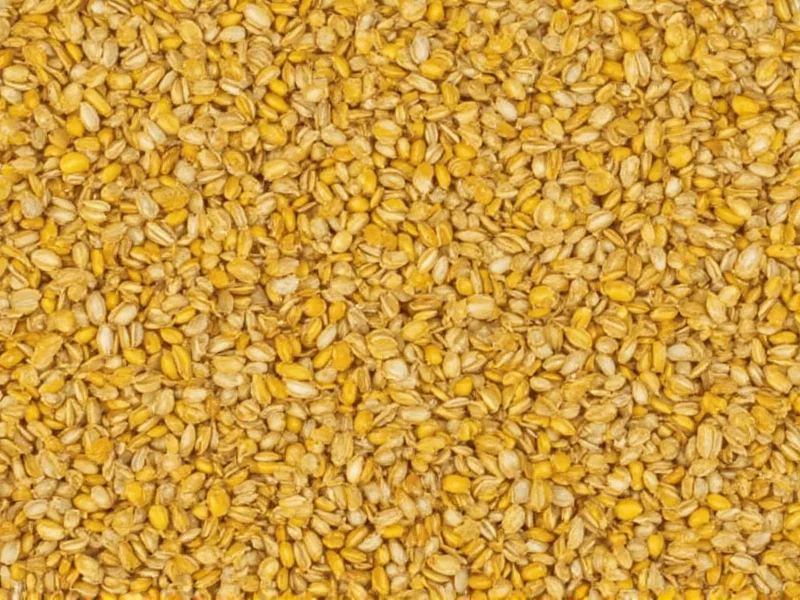Understanding the precise size of mustard seeds provides valuable context for gardeners, chefs, and those studying botanical properties. Despite their minuscule dimensions, mustard seeds pack significant flavor and nutritional value, making them a staple in global cuisines and traditional medicine systems.
Measuring Mustard Seeds: Scientific Perspective
When examining mustard seed size in mm, scientific measurements reveal consistent patterns across varieties. Researchers use precision calipers to measure seed diameter, length, and weight, establishing reliable parameters for agricultural and culinary applications.
| Mustard Variety | Average Diameter | Length Range | Weight per Seed |
|---|---|---|---|
| Black Mustard (Brassica nigra) | 1.0-1.5 mm | 1.2-1.8 mm | 0.002-0.003 g |
| Brown Mustard (Brassica juncea) | 1.2-1.6 mm | 1.5-2.0 mm | 0.0025-0.0035 g |
| Yellow Mustard (Sinapis alba) | 1.5-2.0 mm | 1.8-2.5 mm | 0.003-0.004 g |
Visualizing Mustard Seed Dimensions
Understanding how big is a mustard seed becomes clearer when comparing to everyday objects. A single mustard seed measures approximately:
- One-third the diameter of a standard pencil lead (0.5mm lead)
- Slightly smaller than a grain of coarse sand
- About the size of a lowercase "o" in 8-point font
- Comparable to the thickness of two human hairs placed side by side
This mustard seed size comparison helps visualize why these seeds require careful handling during planting and culinary preparation. Their small dimensions necessitate specialized equipment for commercial processing and precise measurement techniques for scientific study.
Biological Significance of Seed Size
The average size of mustard seeds directly impacts their germination characteristics and growth patterns. Smaller seeds like black mustard have higher surface-area-to-volume ratios, affecting water absorption rates and initial growth speed. Research published in the Journal of Seed Science shows that mustard seeds' compact size allows them to:
- Disperse effectively through wind and animal vectors
- Require minimal soil coverage for successful germination (2-3 times their diameter)
- Maintain viability for 2-3 years under proper storage conditions
- Produce substantial plants despite their tiny starting size
Practical Implications of Mustard Seed Dimensions
For gardeners, understanding the measurement of mustard seeds is crucial for proper planting techniques. The recommended planting depth equals approximately 3-4 times the seed's diameter, translating to 3-6 mm beneath the soil surface. This shallow planting accommodates their small size while providing adequate moisture contact.
Chefs working with mustard seed dimensions must consider how size affects texture and flavor release. Smaller black mustard seeds pop more readily when heated, releasing intense flavor quickly, while larger yellow seeds provide more gradual flavor development. This knowledge helps determine optimal grinding techniques and cooking times for various culinary applications.
Addressing Common Misconceptions
The biblical reference to mustard seeds as "the smallest of all seeds" requires clarification. While mustard seeds are among the smallest commercially used seeds, they're not technically the smallest seeds globally. Orchid seeds measure just 0.1-0.5 mm, and some parasitic plant seeds are even smaller. However, within agricultural contexts and common culinary seeds, mustard seeds represent some of the smallest practical options.
When discussing why are mustard seeds so small, evolutionary biology provides insight. Their compact size developed as an adaptation for efficient dispersal and rapid germination in competitive environments. This biological efficiency explains why such tiny seeds can produce plants reaching 2-3 meters in height under optimal conditions.
Measuring Techniques for Home Gardeners
Without specialized equipment, determining mustard seed size for planting can be accomplished through simple methods:
- Use a ruler with millimeter markings against a white background
- Compare seeds to standard paper thickness (0.1mm)
- Employ smartphone macro photography with measurement apps
- Use seed counting methods (approximately 250-500 seeds per gram)
These practical approaches help gardeners understand seed quality and determine appropriate planting densities based on the actual size mustard seed varieties they're using.
Conclusion
The precise dimensions of mustard seeds—ranging from 1-2 millimeters depending on variety—reveal nature's remarkable efficiency. These tiny biological packages contain everything needed to develop into substantial plants, demonstrating how size doesn't determine potential. Whether you're planting a garden, seasoning food, or studying botanical properties, understanding the exact measurements and implications of mustard seed size enhances your practical application and appreciation of these remarkable natural wonders.
How many mustard seeds equal one gram?
Approximately 250-500 mustard seeds equal one gram, depending on the variety. Black mustard seeds (smallest) number about 400-500 per gram, while yellow mustard seeds (largest) number around 250-300 per gram. This measurement of mustard seeds helps in precise culinary and agricultural applications.
What's the difference between black and yellow mustard seed sizes?
Black mustard seeds measure 1.0-1.5 mm in diameter and weigh 0.002-0.003 grams each, while yellow mustard seeds are larger at 1.5-2.0 mm diameter and 0.003-0.004 grams per seed. This size mustard seed variation affects their culinary properties, with smaller black seeds popping more readily when heated.
How deep should I plant mustard seeds based on their size?
Plant mustard seeds at a depth of 3-4 times their diameter, which translates to 3-6 mm (about 1/8 inch) beneath the soil surface. This mustard seed size for planting guideline ensures proper moisture contact while allowing the small seeds to reach sunlight for germination.
Are mustard seeds really the smallest seeds as referenced in religious texts?
While mustard seeds are among the smallest seeds used commercially, they aren't technically the smallest seeds globally. Orchid seeds measure just 0.1-0.5 mm, significantly smaller than the 1-2 mm mustard seed dimensions. The reference likely meant "smallest among common agricultural seeds" rather than absolutely smallest.
How does mustard seed size affect grinding for mustard preparation?
The small size of mustard seeds (1-2 mm) requires specific grinding techniques. Smaller black seeds need finer grinding to release their intense flavor, while larger yellow seeds can be coarsely ground. Understanding mustard seed size in mm helps determine optimal grinding time and texture for different mustard preparations.











 浙公网安备
33010002000092号
浙公网安备
33010002000092号 浙B2-20120091-4
浙B2-20120091-4